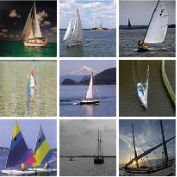In Human Activity Recognition (HAR), understanding the intricacy of body movements within high-risk applications is essential. This study uses SHapley Additive exPlanations (SHAP) to explain the decision-making process of Graph Convolution Networks (GCNs) when classifying activities with skeleton data. We employ SHAP to explain two real-world datasets: one for cerebral palsy (CP) classification and the widely used NTU RGB+D 60 action recognition dataset. To test the explanation, we introduce a novel perturbation approach that modifies the model's edge importance matrix, allowing us to evaluate the impact of specific body key points on prediction outcomes. To assess the fidelity of our explanations, we employ informed perturbation, targeting body key points identified as important by SHAP and comparing them against random perturbation as a control condition. This perturbation enables a judgment on whether the body key points are truly influential or non-influential based on the SHAP values. Results on both datasets show that body key points identified as important through SHAP have the largest influence on the accuracy, specificity, and sensitivity metrics. Our findings highlight that SHAP can provide granular insights into the input feature contribution to the prediction outcome of GCNs in HAR tasks. This demonstrates the potential for more interpretable and trustworthy models in high-stakes applications like healthcare or rehabilitation.
翻译:暂无翻译





